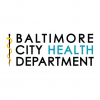Improving Access to Substance Use Disorder Treatment in Baltimore City (Guest Blog NIDA Dr. Nora Volkow Blog)
Wednesday Feb 15th, 2017
Tackling the opioid crisis and overdose epidemic in our nation is a task that involves partnerships among stakeholders at all levels: federal, state, and local governments and other organizations and health care systems in the community. The NIDA has been working with the Baltimore City Health Department (BCHD) on a comprehensive initiative to address the opioid crisis in that city, one that has involved innovative approaches to improving access to treatment for people with opioid use disorder. As these and other innovative programs and policies are implemented across the country, research will be critical for understanding what is most effective on the ground for fighting the opioid overdose epidemic.
Since it is also crucial for communities to share their experiences and learn lessons from one another, Mark L. O’Brien, Director of Opioid Overdose Prevention and Treatment, Baltimore City Health Department and Leana S. Wen MD, MSc, Baltimore City Health Commissioner were invited to guest blog about the initiative under way in their city.
Like much of the country, Baltimore City is facing an epidemic of opioid addiction and overdose. In 2015, 393 people died from drug and alcohol overdose in Baltimore—more than the number of people who died from homicide. And that number continues to rise. In the first three quarters of 2016, 481 overdose deaths occurred in Baltimore. Fentanyl has been a major driver of this increase. Since 2013, there has been more than a twentyfold increase in fentanyl-related overdose deaths, resulting in 267 deaths in January through September of 2016. In Baltimore, a city of 620,000 residents, nearly 25,000 people are estimated to have an opioid use disorder.
